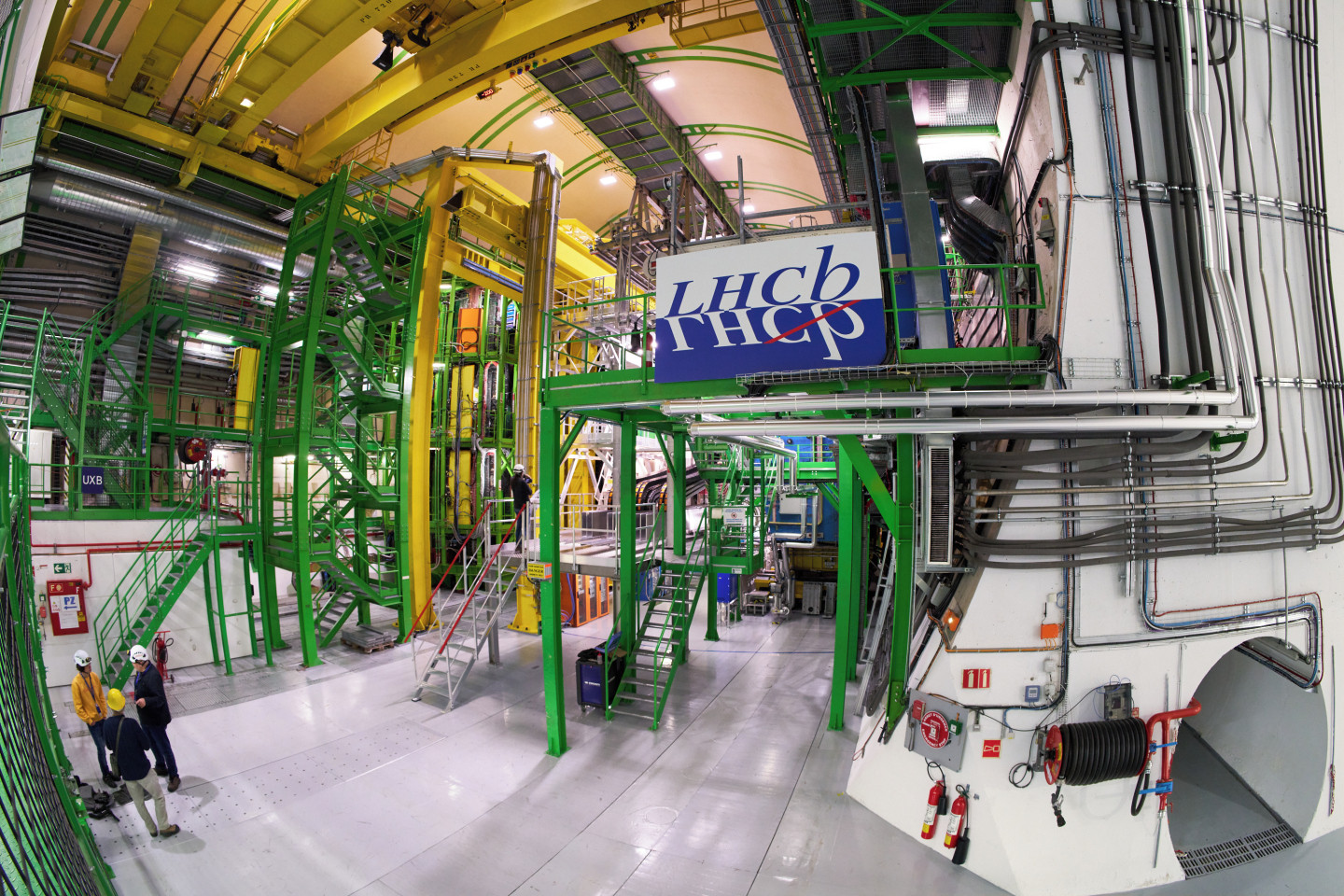Physicists have made a landmark discovery, uncovering the first clear evidence that matter particles, known as baryons, behave differently from their antimatter counterparts.
The finding, from CERN’s LHCb experiment, which includes scientists at The University of Manchester, provides new understanding of the ‘standard Model’ of particle physics and a new piece in the puzzle to explain how and why matter ended up dominating over antimatter after the big Bang to form the Universe we see today.
The finding was presented at the Rencontres de Moriond conference in La Thuile, Italy, on 24 March and posted on arXiv.
Scientists have known since the 1960s that particles have a distinct asymmetry and can behave differently from their antimatter counterparts — a phenomenon called “CP violation.” While this effect has been seen before in the break-up of certain particles, known as mesons, this is the first time it has been definitively observed in particles similar to those of ordinary matter, known as baryons. Baryons, which include protons and neutrons, make up most of the visible matter in the Universe and consist of three quarks.
LHCb spokesperson Vincenzo Vagnoni, said: “The reason why it took longer to observe CP violation in baryons than in mesons is down to the size of the effect and the available data.
“We needed a machine like the Large Hydron Collider (LHC) capable of producing a large enough number of beauty baryons and their antimatter counterparts, and we needed an experiment at that machine capable of pinpointing their decay products. It took over 80 000 baryon decays for us to see matter–antimatter asymmetry with this class of particles for the first time.”
Every particle has an antimatter counterpart with the same mass but an opposite charge. Normally, these pairs should behave like perfect mirror images of each other. However, when particles break down or transform, such as during radioactive decay, this symmetry can be slightly distorted (CP violation). This means that matter and antimatter particles don’t always decay at the same rate. Scientists can detect and measure this tiny difference using advanced detectors and powerful data analysis techniques.
The LHCb collaboration observed CP violation in a particle called the beauty-lambda baryon (Λb), a heavier, short-lived cousin of the proton. They analysed data from millions of particle collisions collected during two runs of the LHC between 2009 and 2018 in search of a certain decay.
The team discovered that the Λb and its antimatter partner do not decay into other particles at exactly the same rate — a difference of about 2.45%. The difference is large enough to exceed the threshold physicists use to confirm an observation of CP violation. Physicists calculate that the odds of such a discrepancy occurring by chance is less than one in three million.
Chris Parkes, Professor of Experimental Particle Physics at The University of Manchester and the former leader of the LHCb collaboration, said: “Without a difference in the behaviour of matter and antimatter there would be not matter in the universe. All the matter and antimatter would have annihilated and the universe today would be made only of light. The LHCb experiment is specifically designed to look at differences between matter and antimatter in the break-up of particles. This is a landmark discovery in these studies, as it is the first time a difference is seen in particles similar to heavy versions of the proton or neutron.”
The CP violation predicted by the Standard Model is far too small to explain the matter–antimatter asymmetry observed in the Universe. This suggests that there may be additional, unknown sources of CP violation that scientists have yet to discover. Finding these is a key goal of research at the Large Hadron Collider and will remain a focus for future experiments.
LHCb spokesperson Vincenzo Vagnoni, said: “The more systems in which we observe CP violations and the more precise the measurements are, the more opportunities we have to test the Standard Model and to look for physics beyond it.
“The first ever observation of CP violation in a baryon decay paves the way for further theoretical and experimental investigations of the nature of CP violation, potentially offering new constraints for physics beyond the Standard Model.”
The LHCb Collaboration is continuing its studies with the second generation version of the large experimental apparatus, key elements of which were built in the Physics and Astronomy department at the University of Manchester.
